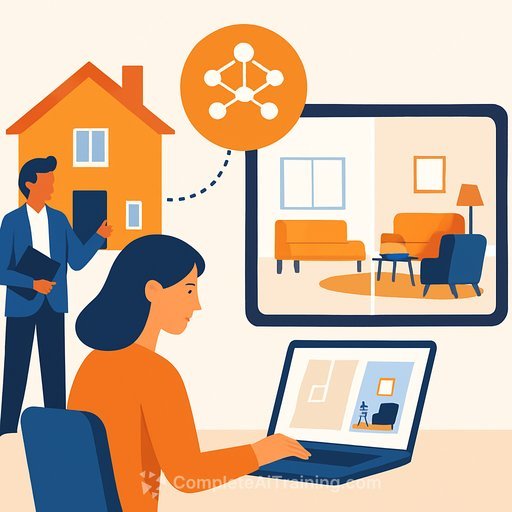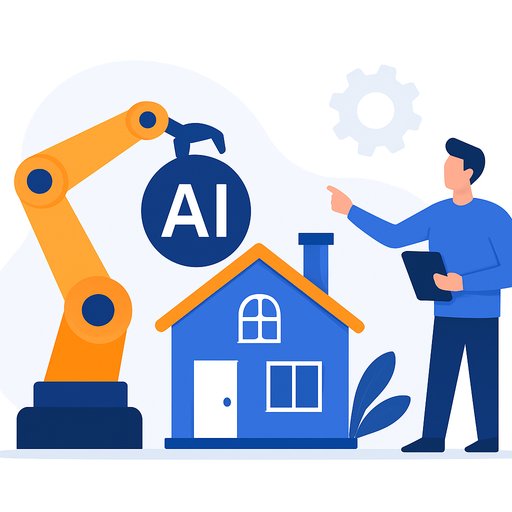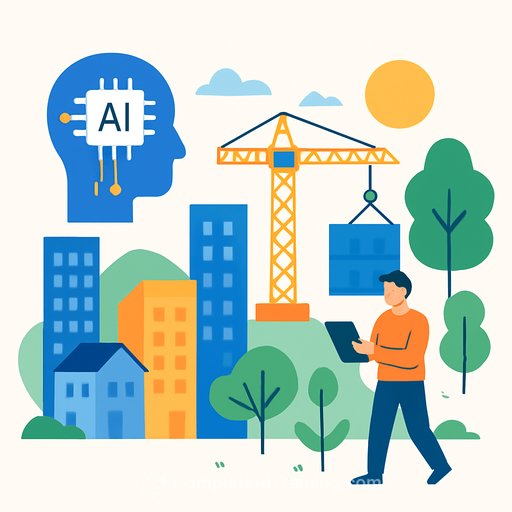The End of the "Empty Room": How AI Rendering Apps Are Changing Proptech and Real Estate Marketing
Scroll any property portal and you'll see the same thing: empty, lifeless rooms. They're technically accurate, but they don't sell. They shrink the space and force buyers to do the heavy lifting of imagination.
There's a better way. Staging builds the emotional bridge that moves a buyer from "interesting" to "I want it." According to NAR's Profile of Home Staging, most buyer agents say staging makes it easier to see a property as a future home (source). The problem has always been speed and cost-until AI rendering matured.
The High Cost of "Empty"
An unstaged listing lingers and racks up carrying costs-mortgage, taxes, insurance, utilities. Staged homes can sell up to 73% faster and pull offers 1-10% higher, because buyers "get it" on first glance. Traditional staging, though, is hard to scale: designers, furniture rental, movers, and weeks of coordination.
Budgets get eaten alive. So do timelines.
The First Wave: Early Virtual Staging
The industry's first digital fix was virtual staging. Cheaper and faster than physical staging, yes-but it often fell into the uncanny valley. Lighting felt wrong, shadows missed, furniture scale was off.
Instead of building trust, bad visuals made buyers hesitate. The market didn't just need a sticker of a sofa-it needed rendering that respects physics, light, texture, and style.
The AI Shift: From "Staging" to "Rendering"
Modern AI rendering apps are trained on huge sets of interiors and architectural references. They read the room-light direction, material behavior, and style-from Scandinavian calm to luxury modern. The output looks like a real photo, not a mockup.
Even better, agents can spin up multiple style options for one room to match different buyer profiles, at no extra cost. That's personalization at listing scale.
Case Study: A Modern Workflow That Actually Moves Units
Old process: shoot empty rooms, send files to a vendor, wait days, hope for the best. New process: upload a photo to an AI rendering platform, choose a style, and iterate on the spot. Tools like Paintit.ai let you redecorate, change wall color to a warm beige, or modernize the kitchen-right from your laptop.
Agents become creative directors, not just coordinators. What used to take weeks now takes minutes-and the output competes with top-tier developer marketing.
Beyond Staging: New Revenue Plays for Proptech
- Virtual renovation: Show "fixer-uppers" as move-in ready, surface hidden value, and widen the buyer pool.
- Pre-sales for developers: Sell the vision before it's built with customizable finishes and layouts.
- Rentals: Let prospects "try on" interiors to speed up lease decisions and reduce vacancy.
Guardrails That Protect Trust
- Disclose clearly: Watermark AI-rendered images and note edits in the description.
- Match reality: Don't add features that don't exist (e.g., windows, fireplaces). Cosmetic edits only.
- Keep originals: Publish at least one unedited photo per space for transparency.
- Align with MLS and brokerage policy: When in doubt, disclose more, not less.
The Practical Playbook for Agents and Builders
- Capture for success: Shoot straight-on angles with consistent exposure; avoid heavy HDR.
- Pick a tool and standardize: Choose an AI renderer and lock in 3-5 style presets per asset class (starter, family, luxury, urban, short-term rental).
- Iterate fast: Generate 2-3 versions, then A/B test on your portal, social, and email.
- Label and file: Maintain a clear folder structure: Original, AI Rendered, Disclosed.
- Measure: Track CTR, saves, showing requests, days on market, and price deltas versus unstaged comps.
- Systematize: Add prompts and presets to your listing checklist so every new property gets the same treatment.
What It Means for Your P&L
- Lower CAC: Better click-through and time-on-page reduces paid traffic waste.
- Fewer days on market: Carrying costs drop as decision speed rises.
- Higher perceived value: Cleaner presentation supports stronger offers without overpromising.
- Lean ops: Less coordination with vendors, more control in-house.
Developers and GCs: Use It Beyond Marketing
- Value engineering: Visualize material swaps before you buy.
- Sales enablement: Hand your team a preset library of finishes to present on calls.
- Design alignment: Keep owners, sales, and subs on the same page with fast visual updates.
What's Next
The "empty room problem" is solved for anyone willing to adopt. Money, time, and logistics no longer block great visuals. The only limit now is creative direction-and that can be scripted into your process.
For agents, that means faster sales and stronger offers. For developers, pre-sales with conviction. For buyers and tenants, a place that feels like home before they step inside.
Level Up Your Team's AI Skills
If you want a quick path to practical prompts and tools for your marketing stack, explore these concise programs: AI courses by job.
Your membership also unlocks:





